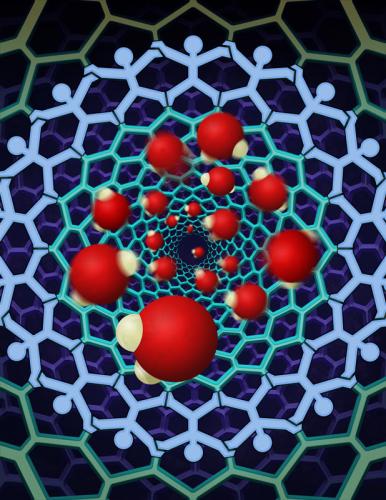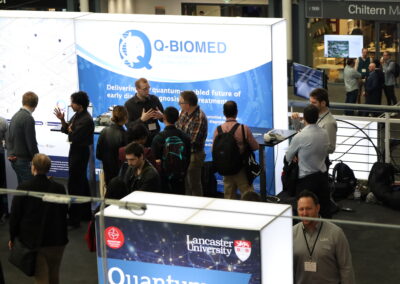An article published in the journal Nature Nanotechnology today discusses a recently discovered phenomenon in which the use of carbon nanotubes, under specific conditions, could potentially lead to more efficient water filtering with less expense and less impact on the environment.
An international collaboration, including researchers from the LCN, set out to study the applications of carbon nanotubes in water filtration. The researchers’ study of nanotubes was enabled by a virtual supercomputer created by IBM in which volunteers channel the surplus processing power of their computing devices to scientists for use in conducting simulations.
The scientific community initially expected that the narrow diameters of carbon nanotubes would slow the water’s flow. Surprisingly, early experiments hinted that water is not impeded in the expected way as it passes through the nanotubes. To understand why the researchers undertook an unprecedented, massive computational simulation study powered by IBM’s World Community Grid to find out what was behind this.
The research project, called Computing for Clean Water, was carried out with the support of over 150,000 volunteers worldwide, who contributed their own computing power to the research thanks to the World Community Grid. The results have important implications for desalination and energy conversion using salinity gradients. This research also sheds new light on the fundamental processes occurring in the nanoscale biological pores that funnel essential ingredients into cells.
Carbon nanotubes, such as those studied in the Computing for Clean Water project, are cylinders made of carbon atoms bonded together like in graphite. Carbon nanotubes can have diameters of just a few nanometers – one ten-thousandth of a human hair. But if you thought that was small, think again. The natural vibrations of the carbon atoms in a nanotube – jiggling that occurs due to thermal energy from the surroundings – are on a scale of a picometer, which is a mere thousandth of a nanometer. Although this is minute, by simulating water molecules flowing through nanotubes in painstaking detail, the researchers have shown exactly how, under the right conditions, such vibrations result in oscillating friction, leading to enhancements of the rate of water diffusion through the nanotubes of more than 300%.
“Prior to our project, simulations of water flow in carbon nanotubes could only be carried out under unrealistically high flow-rate conditions”, said Quanshui Zheng, the Director of the Centre for Micro and Nano Mechanics at Tsinghua University, the lead partner institution in this study, “Thanks to the Computing for Clean Water project, we could extend such simulations to probe flow rates of just a few centimeters per second, characteristic of the working conditions of real nanotube-based filters.” This required the equivalent of over 35,000 years of processing power on a single computer, which was accumulated thanks to the contributions of over half a million computers that volunteers provided to the Computing for Clean Water project, by downloading the project’s simulation software on their laptop and desktop computers.
François Grey, an honorary LCN professor, who coordinated this international effort and manages the Citizen Cyberscience Centre at the University of Geneva, points to the broader significance of this result; “Computing for Clean Water and similar volunteer computing initiatives are playing an increasingly important role in major scientific computing breakthroughs, ranging from drug discovery and climate modeling to epidemiology and particle physics research. As this study shows, the range of research questions that can benefit from public participation is growing all the time, in step with the power of personal computing.”
Commenting on significant insights that this project has produced, Michael Urbakh of Tel Aviv University, another partner institution on this project, remarks that “We’ve uncovered a deep connection between this new result for water flow in nanotubes, and our understanding of friction between solids on the nanoscale. We’ve discovered that very small vibrations can help materials to slide much more smoothly past each other, whether wet or dry.”
An important outcome of this study is a detailed understanding of how the length of the nanotube enhances certain regular atomic vibrations, or phonons, and thus determines a subtle oscillation of the flow rate as a function of the applied hydrostatic pressure. This oscillation, which had not been detected in previous studies due to lack of sufficient computing power, could conceivably be used to optimize the filtering properties of arrays of carbon nanotubes, in future filter designs. The same effect could be used to improve the efficiency of desalination filters made of carbon nanotubes or other materials such boron nitride, and may even play a role in explaining the abilities of naturally occurring pores in biological cells to filter out certain substances with exquisite precision.
LCN Authors: Ming Ma & François Grey
Other Contributors: Researchers at the University of Sydney, Monash University in Australia and the Xi’an Jiaotong University in China



